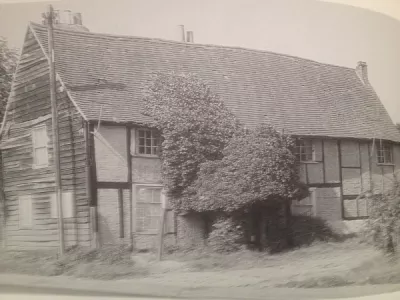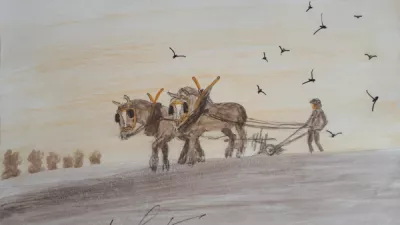Agriculture
The main occupation of most of the inhabitants for many centuries

The story of agriculture in this part of west Hertfordshire is long. It includes arable, livestock and hay, fruit (especially but by no means cherries) and watercress, and short articles will be used to give information on these and related topics, and to guide the visitor to further information. A full history would take a website of its own!
But throughout this part of our history, we should remember that Abbots Langley, Rickmansworth, Sarratt, Chorleywood and the other communities round here were essentially farming communities. Until at least the early years of the twentieth century and often much later, farms formed part of our streets, dairies were in our shopping areas, and animals were driven along the roads as part of their daily regime - cows for milking being just part of it. A large part of the population were employed in agriculture, with the agricultural labourer ('ag lab', as census enumerators often recorded them) a large and important element of our communities. And they, and their families, were frequently living in poverty, often saved from destitution by the straw plaiting of the women and by the deliberate action of the parish authorities in proving poor relief, with the poor house as a last but frequent resort. The women and children often worked hard and uncomfortably in the fields in tasks often not even recorded, but without which there would have been real trouble for may families.
The farm buildings of the nineteenth century, and earlier, often survive, and give us many of our common impressions of 'farming' in the past. But the cottages in which many people lived have often gone: they were very often poorly built single or two-room dwellings supporting life precariously, and all too often in a state of collapse, which is why so few remain.
The museum will develop further the story of agriculture in this area, and our colleagues at the Chiltern Open Air Museum specialise in showing how it worked. The Museum of English Rural Life in Reading is another fine resource.
Some references for further study:
Nigel Agar, Behind the plough (Hatfield, 2005)
Arthur Young, General View of the agriculture of the county of Hertfordshire (London, 1804; reprinted Newton Abbot, 1971)
G. E. Mingay (ed), The agricultural history of England and Wales (Cambridge,1989)
Pamela Horn, Life and labour in rural England (Basingstoke, 1897), and The rural world (London, 1980).
Julie Moore, The impact of agricultural depression and land ownership change on the county of Hertfordshire c1870-1914 (PhD Dissertation, University of Hertfordshire. 2010)
